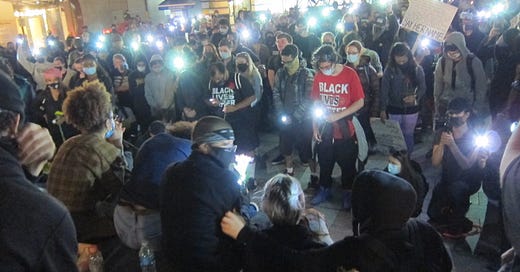A Queer Protestor Was Suspiciously Killed While Defending Black Lives
Last night's somber memorial for Summer Taylor in Seattle was a celebration of queer allyship—so why are authorities condemning it?

Last night we danced for Summer Taylor, the 24-year-old protestor killed in a hit-and-run while protesting for Black lives. Taylor, a queer non-binary activist from Seattle, was a regular presence at a daily protest march led by a group of young black femmes. This march departs daily at 7PM from the CHOP area to the Interstate-5 freeway, which protestors shut down temporarily in an act of civil disobedience. For the past eight weeks, Washington State Patrol has blocked off a section of the freeway with barricades and rerouted traffic. But on Friday night, a white Jaguar managed to speed past an opening in the barricades, drive through an exit ramp, and plow into two protestors who didn’t jump out of the way in time. The driver has been detained and charged with vehicular assault.
“She died,” texted one of my sources who’d just left the hospital, as we assembled for the march last night. Determined to prove that a probable hate crime couldn’t deter us, the protest group had more than quadrupled in size—there were more than 100 people in the crowd, compared to the dozen or so that showed up on the night of the attack. In addition to a bike brigade to help stop traffic, many vehicles also volunteered to form a line of defense, trailing slowly behind the last line of protestors in all-black, who sprayed BLM on the asphalt as Seattle’s white technocrats stared blankly on. As news of Summer’s passing spread through the crowd, the tenor of our chants lowered from indignant outrage to somber bereavement.
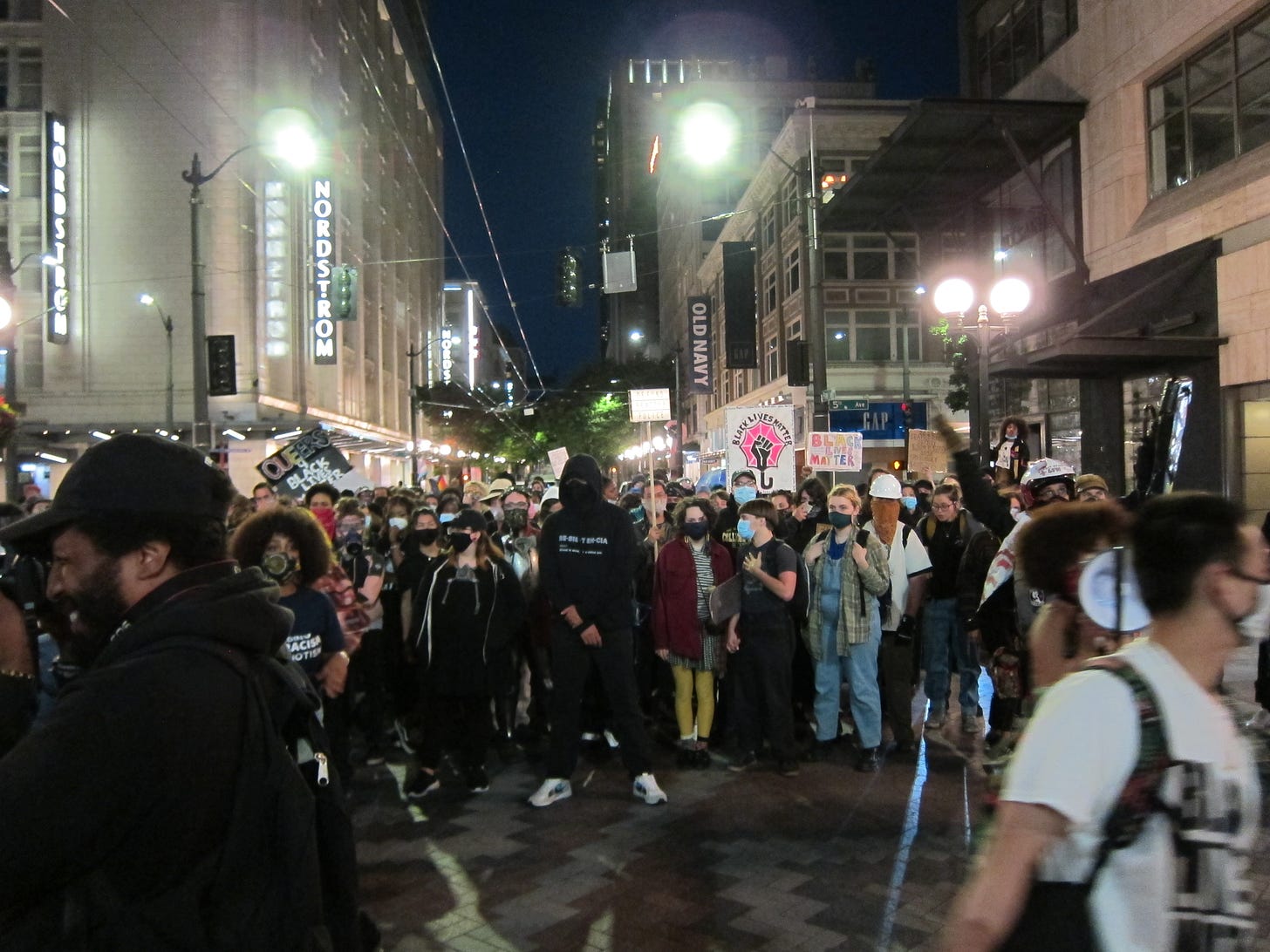
At the same time, State Patrol also announced that they would not be allowing protestors to enter the freeway that night—and any violators would be arrested. For a few tense moments, I wondered if protestors would attempt to take the freeway regardless, but the march’s leaders instead brought us to a public square and announced that we would be holding a memorial for Summer instead.
Holding our phone’s torchlights in the air, protestors gave tributes to the young activist’s dedication. “Summer loved to sing ‘Beauty and the Beast’ every night—they were fucking funny and kind. They paid the ultimate price because they were here to protect all of us,” said one of Summer’s friends, voice cracking with pain. “We love you, it’s not your fault” said people in the crowd softly in consolation. “It’s nobody’s fault except for the person who decided to [drive into protestors],” one of the march’s leaders responded. “And we love each of you here like family.”

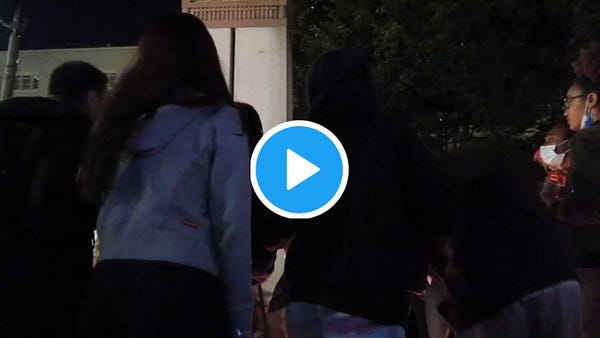
One by one, we laid flowers and candles into the shape of a heart in Summer’s honor, and everyone knelt in silence, the night air punctuated by muffled sobs. Finally, we got up and danced, swinging our hips to Rae Sremmurd’s "Come Get Her,” the last song that Summer had been dancing to on the freeway right before their death, then getting in formation for the “Cupid Shuffle.” This was the first time I’ve danced in a big crowd since I emerged from lockdown—and it was another reminder of what I’ve always known: that cathartic dance is a joyous reprieve from social trauma, and that marginalized bodies dancing is power.
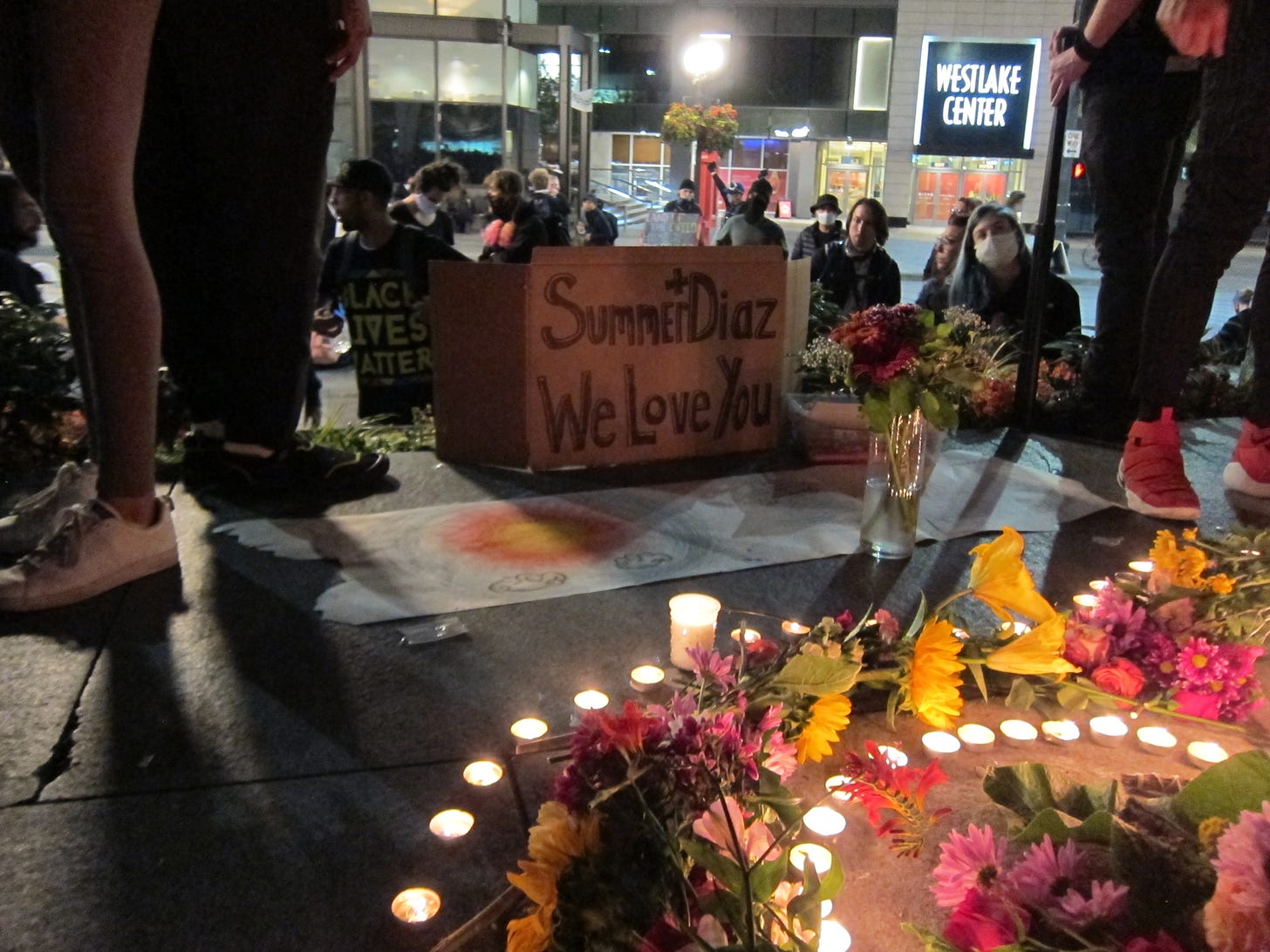
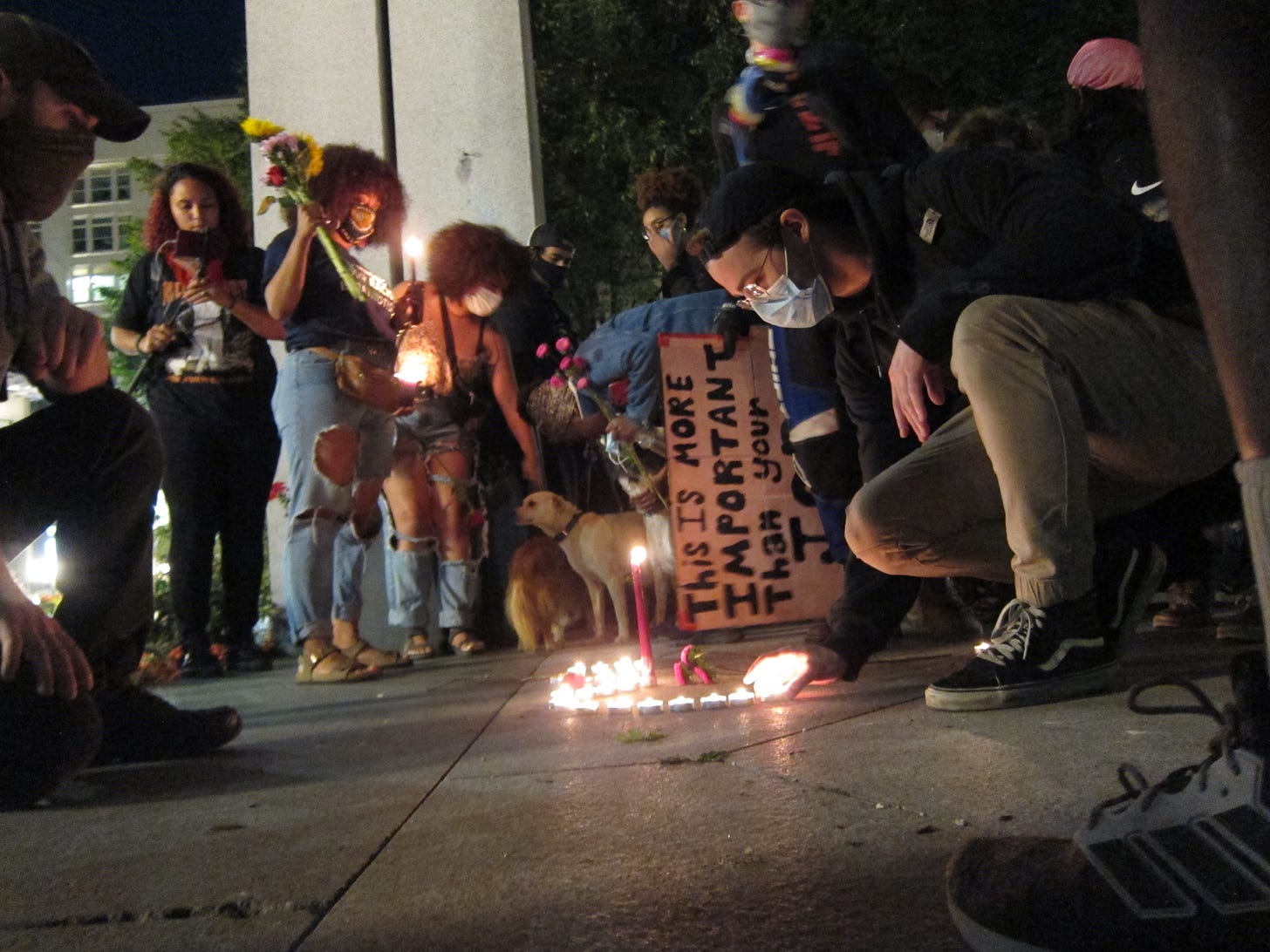

But how do you make sense of another senseless death in this time of revolutionary protest? The authorities are already trying to victim-blame the protestors, accusing them of putting their own lives in danger: “Blocking a freeway is a crime and […] there are consequences for criminal conduct,” said State Patrol Capt. Ron Mead to the press yesterday, while Seattle’s Mayor Durkin commented that “No one should risk their life for demanding better from our city, state and country.” Both of these statements failed to hold the driver accountable for murder, or state patrol for their fatal security lapse; they also blatantly ignore the long history of blocking highways as a tactic in civil rights protests. Urban highways have always been a way for wealthy whites to speed blindly past black blight, and still play an active role in severing and segregating black neighborhoods. Blocking highways is also a highly effective way to stop commerce and call attention to the infrastructure of inequality—especially when so many black people have lost their lives for simply walking or driving down the streets.

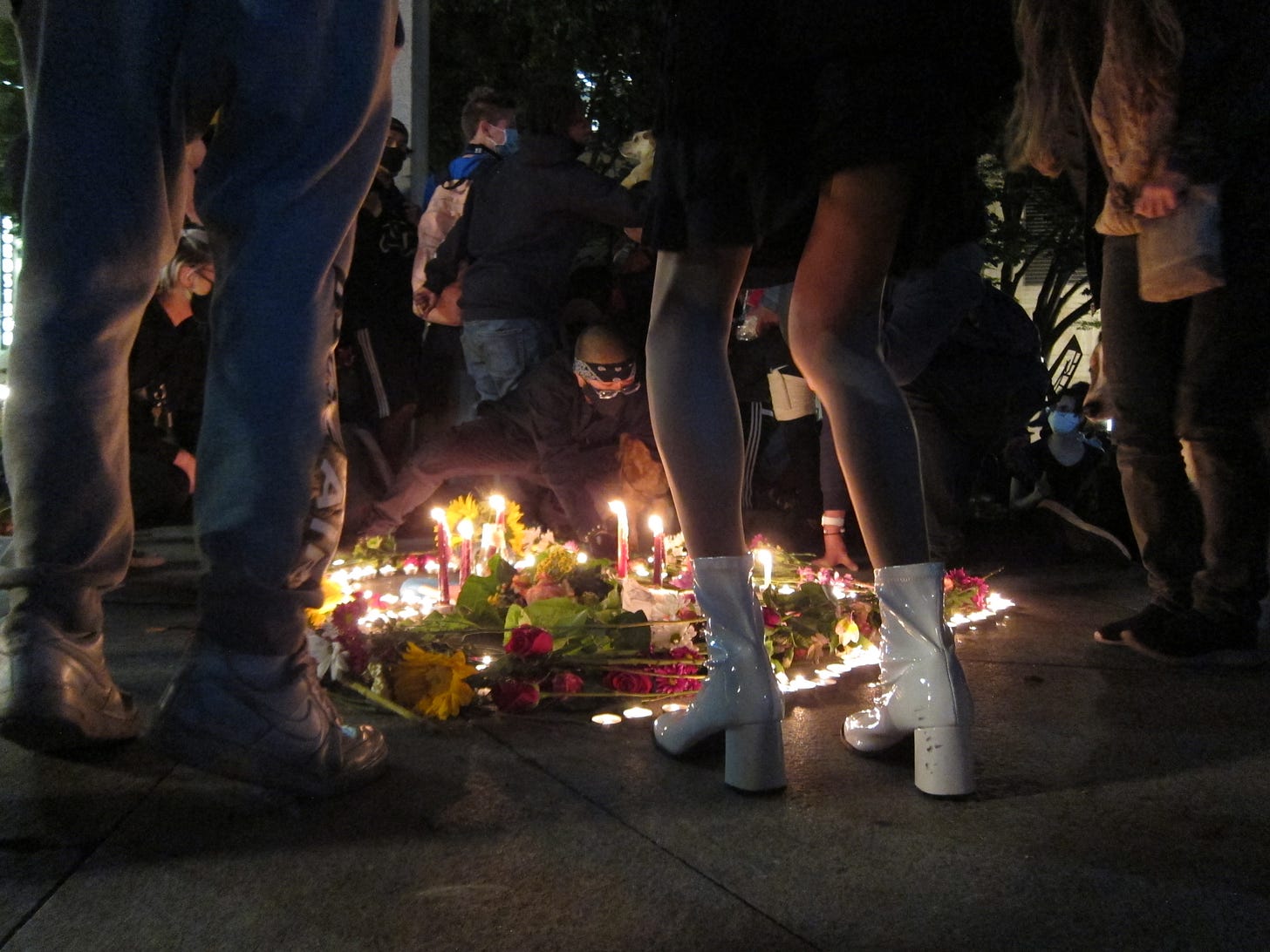
Protestors also claim that Summer’s death was premeditated, and the circumstances around them highly suspicious. According to a video statement released by the black femme-led group behind the freeway march, four white people were spotted hiding in the bushes recording the protestors shortly before the car attack, and escaped on foot. When they asked for street camera footage to get proof of these people in the bushes, authorities told them the cameras were shut off. In response to online commenters trolling them by saying this incident—like CHOP’s shootings—is proof that we need cops after all, one of the young black women eloquently put it this way: “We’re not saying we don’t need security. We’re not calling to defund our safety. We just don’t need cops to come in with big guns and riot gear in order to escort us. We need someone who is trained in crowd control and de-escalation.”
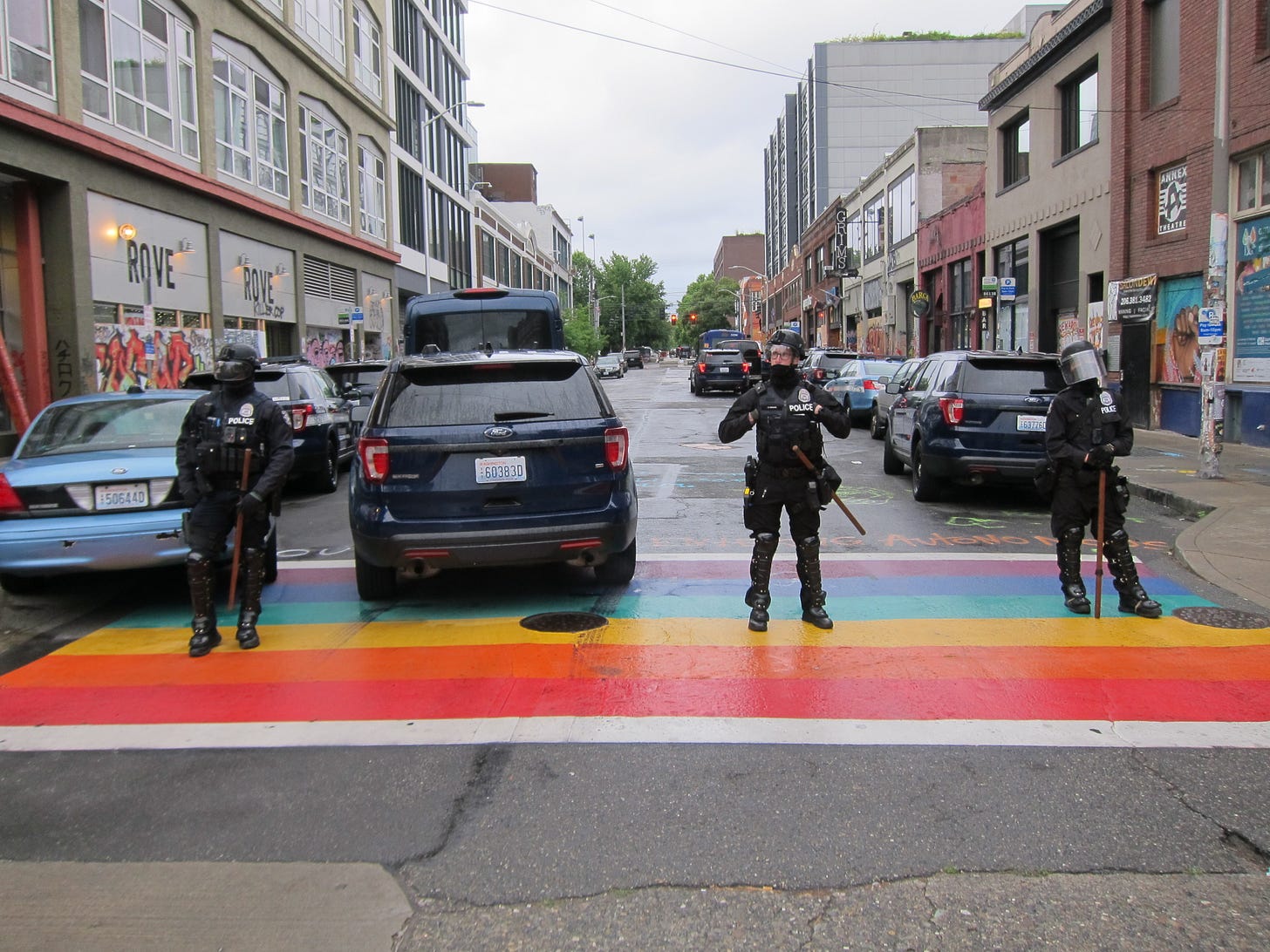
As I left the memorial around midnight, I thought about how Summer Taylor and Diaz Love (the second protestor who was hit by the car) were queer white activists—and how all of these nightly protests have been going down in and around Capitol Hill, Seattle’s gay—and extremely gentrified—neighborhood. The fight for black and queer liberation should be collective one. But as queer culture’s insurrectionary roots in political protest have been steadily co-opted by rainbow capitalism, it feels like many queers have also become divested from the Black Lives Matter movement. While hanging out at CHOP, for example, I often spotted Capitol Hill’s gay residents taking their dogs out on walks with angry and disgusted looks on their faces—and many of them walked up to the cops during CHOP’s shutdown to thank them for restoring order. Police have also been arresting and pepper spraying protestors on the neighborhood’s rainbow-painted streets—a startling reminder of how this superficial symbolism means nothing when it’s not backed up by real solidarity and action.
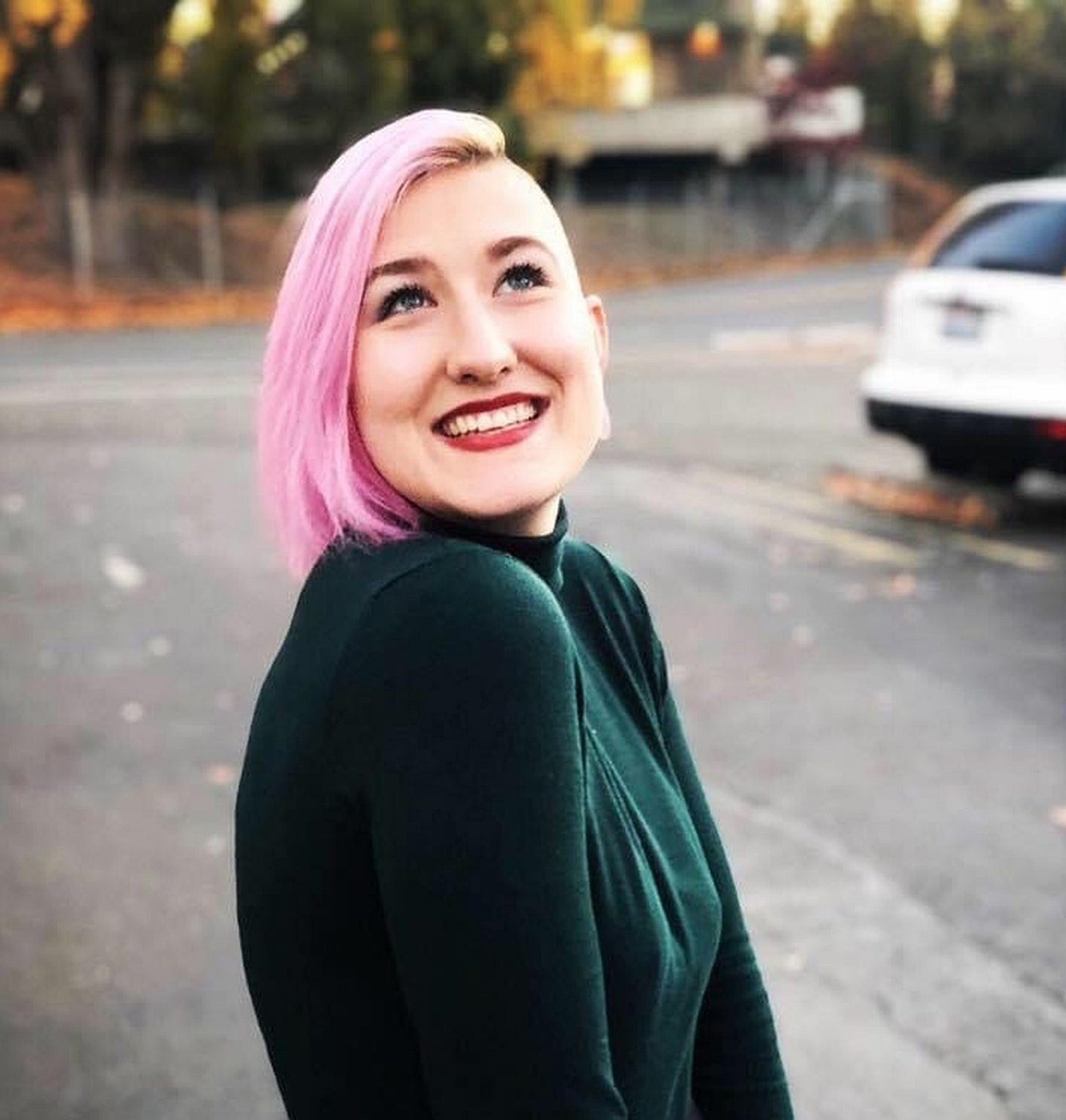
Summer and Diaz, however, were part of the coalition of queers who have been marching with BLM since day one, putting their bodies on the front line. “A lot of our leaders are queer, and there’s a strong gay presence at our marches,” said one of Summer’s friends named Marilyn to me at the end of their memorial. “Summer were always up at the front with an umbrella to keep people protected. They really cared about making sure people were safe. They were a really kind person.” With that, I jumped back on my bike and rode back home, past the formerly-occupied police precinct where cops are now milling about like nothing happened, the errant sprays of 4th of July fireworks crackled around me like gunshots.
Rave New World is a reader-funded newsletter and I couldn’t do it without your support. If you value this kind of immersive citizen journalism, please consider upgrading to a paid subscription, and sharing this post on social media with friends. Thank you!

